B M Sharma Solutions for Chapter: Electrical Measuring Instruments, Exercise 2: DPP
B M Sharma Physics Solutions for Exercise - B M Sharma Solutions for Chapter: Electrical Measuring Instruments, Exercise 2: DPP
Attempt the free practice questions on Chapter 6: Electrical Measuring Instruments, Exercise 2: DPP with hints and solutions to strengthen your understanding. Chapterwise/Topicwise Daily Practice Problems (DPP) Electrostatics and Current Electricity JEE Main & Advanced solutions are prepared by Experienced Embibe Experts.
Questions from B M Sharma Solutions for Chapter: Electrical Measuring Instruments, Exercise 2: DPP with Hints & Solutions
If the resistance of a voltmeter is and the resistance of the ammeter is , then find the resistance , when the voltmeter reads and the ammeter reads .
In the circuit shown in the figure, reading of voltmeter is when only is closed, reading of voltmeter is when only is closed and reading of voltmeter is when both and are closed. Then,
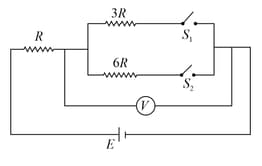
A moving coil galvanometer has equal divisions. Its current sensitivity is divisions per and voltage sensitivity is divisions per . In order that each division reads , the resistance, in , needed to be connected in series with the coil, will be
The graph which represents the relation between the total resistance of a multi-range moving coil voltmeter and its full-scale deflection is
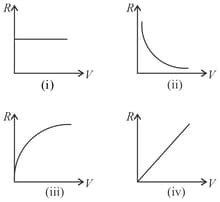
The ammeter has range of , without shunt. The range can be varied by using different shunt resistances. The graph between shunt resistance and range will have the nature as
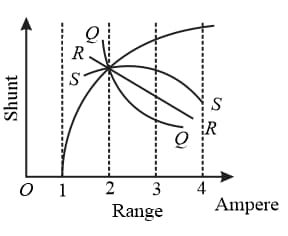
In the circuit shown here, the readings of the ammeter and voltmeter are
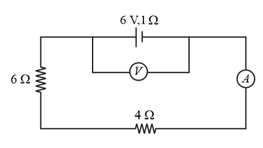
The reading of the ideal voltmeter, in the adjoining diagram, will be
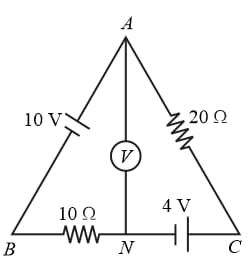
A moving coil galvanometer has equal divisions. Its current sensitivity is divisions per and voltage sensitivity is divisions per . In order that each division reads , the resistance, in , needed to be connected in series with the coil, will be
